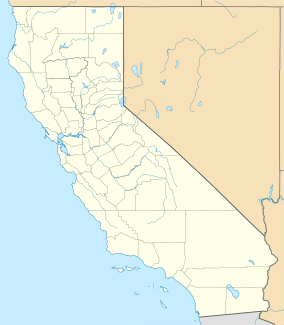Big Creek State Marine Reserve and Marine Conservation Area facts for kids
Quick facts for kids Big Creek State Marine Reserve and Marine Conservation Area |
|
|---|---|

Big Sur
|
|
| Location | Big Sur, California, USA |
| Nearest city | Big Sur, California |
| Established | 1994 |
| Governing body | California Department of Parks and Recreation |
The Big Creek State Marine Reserve (SMR) and Big Creek State Marine Conservation Area (SMCA) are special ocean areas. They are located near Big Sur on the central coast of California. These areas are like underwater parks. They protect marine life and habitats. Together, they cover about 22.45 square miles (58.15 km2) of ocean. In the SMR, no fishing or taking of any marine life is allowed. It's a full protection zone. In the SMCA, some fishing is allowed. This includes salmon, albacore, and spot prawn. This helps balance protection with some human use.
Contents
History of Big Creek Marine Protected Areas
The Big Creek State Marine Reserve was created in 1994. Later, in September 2007, the Big Creek State Marine Conservation Area was added. These areas were established by the California Fish & Game Commission. They are part of a bigger plan called the Marine Life Protection Act Initiative. This initiative works to create a network of protected ocean areas. The goal is to keep California's coastline healthy. It's a big effort involving many people.
Where are the Big Creek Marine Areas?
These two marine protected areas are next to each other. They are found off the coast of Big Sur. The ocean floor here is very interesting. It has deep, narrow underwater canyons. These canyons cut into the continental shelf. The areas are also close to Julia Pfeiffer Burns State Park. This park is famous for its beautiful coastline.
Amazing Ocean Life and Habitats
The deep underwater canyons of the Big Creek areas are home to many creatures. You can find different types of deepwater rockfishes here. Some examples are cabezon and bocaccio. These fish hide among the rocks. The area is also a very important feeding spot. Southern sea otters come here to find food. Protecting these areas helps these animals thrive.
Fun Things to Do and See Nearby
The nearby Julia Pfeiffer Burns State Park offers great activities. You can hike on trails with amazing views. One popular trail leads to McWay Falls. This is a beautiful 80-foot (24 m) waterfall. It drops right into the ocean cove below.
California's marine protected areas encourage ocean fun. You can go kayaking, diving, or snorkeling. Swimming is also allowed in most places. These activities let you explore the ocean safely. They also help people learn about marine life.
Watching Over Our Ocean: Scientific Monitoring
Scientists regularly check on these marine protected areas. This is part of the Marine Life Protection Act. They want to see how well the areas are working. They also learn more about the health of our oceans. Studies in other protected areas have shown good results. Fish numbers and sizes have slowly improved.
Many universities and labs help with this research. These include Stanford University and the University of California Santa Cruz. Scientists use different methods to study the ocean. They might use fishing lines to catch and release fish. They also do underwater surveys with scuba divers. Sometimes, they even use special underwater robots called ROVs!



